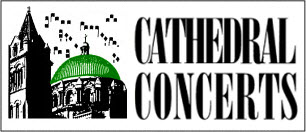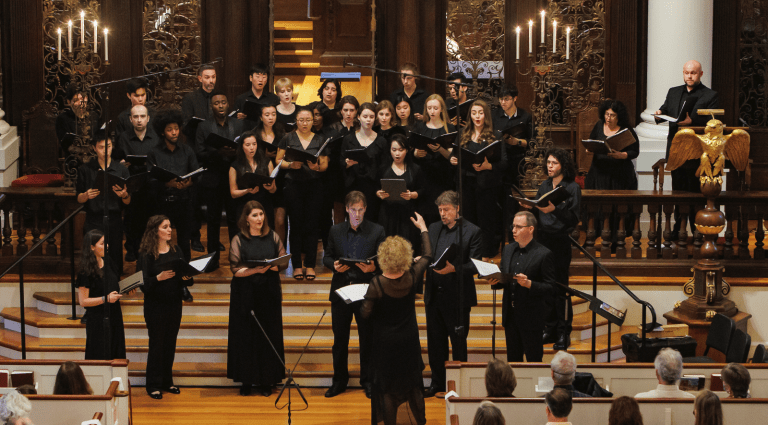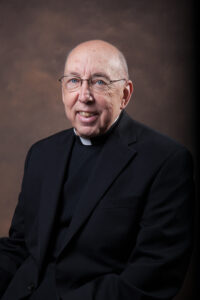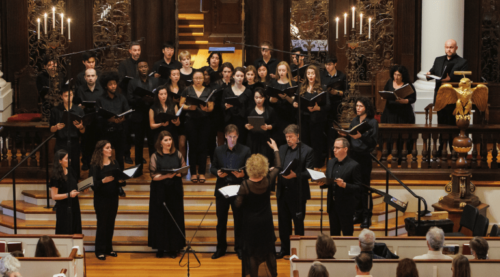Experience Great Music in a Great Space!
Final concert of the 2023-2024 Season
Artists and Dates Subject to Change
The Boston Camerata
Friday, April 19, 2024 8:00pm
Les Miracles de Notre Dame
THE MIRACLES OF NOTRE DAME
‘…you wish to sing with cantus, discantus and triplum! Imagine, in your mind, the love that [Gabriel’s] mouth made before Mary, and speak with the mouth, and weep, and then you will sing in cantus, discantus and triplum, such that it will bring delight to the angels in Paradise, and all the heavenly Curia.’
(Robert the Sorbon, 1201-1274*)
On that sombre day in 2019 the entire planet was a horrified witness: on Twitter, on YouTube, or right there by the quais of the Seine, where Parisians knelt and wept silently, or sung hymns. In real time, we saw the cathedral spire crumble in flames. We all feared that the mighty building, with its two towers rising to heaven, a structure medieval but also romantic and somehow eternal, might be lost forever.
Thankfully, Notre Dame, though severely damaged, remains standing on the Ile de la Cité. From the start, it was built to impress, to inspire awe. From the start, as construction got underway during the twelfth and thirteen centuries, eyes turned towards Paris, and our minds and eyes remain there, centuries later. As it is rebuilt everyday (with a reopening scheduled for December 2024), we rewitness its long creation: a powerful process somewhat akin to our musical quests.
But not eyes alone; if the structure of the cathedral was widely admired and emulated, the structures of musical sound as practiced within its walls helped change forever the compositional and performance practices of Western Europe. They remain, as well, a source of inspiration today.
At the heart of Notre Dame music was liturgical, “Gregorian” chant. Yet, for a powerful few decades the singers participating in the cathedral liturgies moved far beyond the monastic simplicity of the underlying chant melodies. New and elaborate structures were created and notated. Florid, rhythmicized countermelodies evolved, encouraging solo voices (one, two, or three) to weave their decorations, distending and often dissembling the underlying liturgical melody (Judea et Jerusalem). The suspension of “normal” plainchant temporality creates, at least to our ears, another kind of mental and corporeal rhythm, a heightened spirituality, much as the vaults of the church architecture draw our eyes upward, towards the heavens.
A few names coming down to us via the medieval theorist we have named “Anonymous IV” – have been cited as masters of this new and daring style. Leonin (and several others), Perotin (and his predecessors) and others, are named. Their lives and specific achievements are otherwise unknown to us. They were leaders with a special status among a collaborative guild, mostly untenured, comparable in many ways to larger churches of our own day who maintain a regular musical program. This extraordinary group was in large, as we understand it, financially insecure even if musically gifted. Their employment terminated each year in late June, at Saint Jean, and they needed to be re-hired each fall. At least some of them had a reputation for raucous misbehavior, sexual and otherwise, and were apparently available for hire outside of their cathedral duties. This ebullient, all-too-human guild created a unique, magnificent anthology of heaven-storming sacred works. It was probably, as well, at the origin of other recreational pieces inspired by dance-like vernacular pieces, composed with cantus, discantus and triplum (Post-partum virgo/Ave regina/Propter veritatem.)
Within the church walls, and without, devotion was intense around Notre Dame/Our Lady — woman, virgin, mother, divine intercessor for fallen mankind. Her place was central in liturgy, art, and music, and we share with you a number of beautiful works dedicated to her, from monastic orders (Ma vielle), from courtly milieu (Dou très doux nom), from the liturgy itself (Virgo gemma virginum). These works were intended for various publics, performed in and out of the church and its orders, by musicians of various backgrounds, professionals or not, paid traveling minstrels or enlightened lay people. Paris was the center of musical creation, but other nearby regions – Vic sur Aisne (Ma vielle), Reims (Ave Maria), Beauvais (Et honore virginali) were all a part of a large web of music and architecture.
Yet another world takes shape during these decades. On the left bank of the Seine (where it seems that some of our star lead singers held property and perhaps also lived), a few hundred yards from the great cathedral, the Abbaye of St Victor and the Sorbonne exert intellectual and moral authority. The theoretical science of musica was part of the Sorbonne curriculum, taught by masters/magister who also had their place in the bosom of the church. The Sorbonne masters also propagated moral teaching, recalling to the dissipated young clerks under their purview the virtues of Christian life, citing Cato to “walk with the good” (Fas et nefas.) A student’s glass (or two) at a Left Bank tavern was scarcely to be remarked on, but wastrel clerks must renounce the excesses of youth (Dum juventus floruit) and the shameful sins of the flesh (Vita perdite), and fallen Man must be exhorted to return to the straight and narrow path (Ad cor tuum revertere).
Notre Dame in the twelfth and thirteenth century was a construction site; it was such at many points across the centuries, and it is so once again today. Is there a miracle at work? Our own humble challenge is to re-imagine the sounds that accompanied the creation of the great church, emerging, like the stone walls and vaults, from the indomitable force of the human spirit, spreading beyond the church walls to Paris and the human realm. It is our joy – Camerata singers and instrumentalists, along with esteemed collaborators – to share with you the profound beauty of these works, at once, like the cathedral, medieval and yet transcending time.
Anne Azéma, October 2022, revised March 2024.
(Translated by Joel Cohen)
* Cited in: Organistrae and the Cultivation of Polypohny at Notre Dame de Paris, c. 1190-1273, Eric Nemarich, Speculum, volum 99, number 1, January 2024
Tickets: $45, $30, & $20
Monsignor James T. Telthorst – St. Louis Cathedral Concerts Endowment Fund
$35,000 Matching Gift Challenge
In 1992, St. Louis Cathedral Concerts was established with the enthusiastic support of Msgr. James T. Telthorst, who was the Rector of the Cathedral Basilica at the time and who went on to serve for many years as a member of the Cathedral Concerts board. Msgr. Telthorst was also the recipient of the “Great Music Award” at our gala event in May of 2013 in appreciation of his ongoing commitment to and support of Cathedral Concerts.
Today, St. Louis Cathedral Concerts has secured perpetual support with the creation of an endowment fund named in Msgr. Telthorst’s honor. The Monsignor James T. Telthorst – Cathedral Concerts Endowment Fund was established through the generosity of several donors and will provide annual distributions that will help St. Louis Cathedral Concerts fulfill its mission of presenting affordable live concerts in the Cathedral Basilica of St. Louis featuring world-class musicians and the finest repertoire of sacred and classical music.
A generous anonymous donor has pledged to match gifts up to $35,000, thereby doubling your giving power! Gifts to The Monsignor James T. Telthorst – Cathedral Concerts Endowment Fund should be made directly to the Roman Catholic Foundation.
Click here to make your gift.
Great Music in a Great Space!
St. Louis Cathedral Concerts is where ALL of St. Louis experiences “Great Music in a Great Space!”
Join us for an evening of spectacular music featuring the world’s best musicians in one of the world’s grandest Cathedrals.
Our Mission:
To present affordable live concerts in the Cathedral Basilica of St. Louis featuring world-class musicians and the finest repertoire of sacred and classical music for the cultural enrichment, education, and enjoyment of the entire region.
“STUDENT RUSH” Tickets
Students with a valid Student I.D. can get a ticket at the door
for any concert in the best available section for just $10.
Call ahead to ensure availability – 314-533-7662
Policy for children under 8 years of age:
We do not recommend children under the age of 8 attend the concerts.
Order Online!
- Online sales end 3 hours prior to performances.
- Tickets purchased within 7 days of performance will be held at the door.
- All Sales Final. No Refunds or Returns.
Cathedral Concerts is an independent 501(c)(3) non-profit corporation.
We receive no funding from, nor provide funding to, the Archdiocese of St. Louis or the Cathedral Parish.
What are the Benefits of purchasing tickets for 3 or more Concerts?
- Up to a 20% discount off regular ticket prices!
- Priority Processing for tickets in Section 1!
- Ticket Exchange privileges if you find you cannot attend a concert for which you have purchased tickets!
- Ticket replacement for lost or misplaced tickets! (just call up to two hours before the concert – 314-533-7662)
Select 3 or more events, receive a 10% discount off your total
Select 5 or more events, receive a 20% discount off your total



